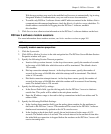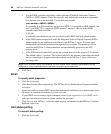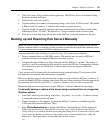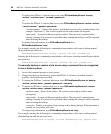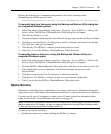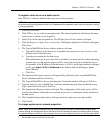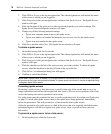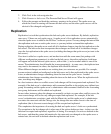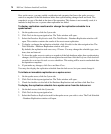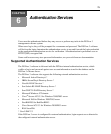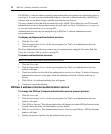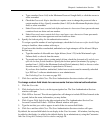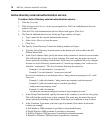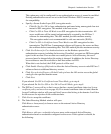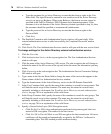
Chapter 5: DSView 3 Servers 71
2. Click Tools in the side navigation bar.
3. Click Promote to hub server. The Promote Hub Server Wizard will appear.
4. Follow the prompts and heed the cautionary warnings in the wizard. The spoke server on
which the wizard is running will become the hub server, and the other spoke servers will be
advised of the changed configuration.
Replication
Replication is a task that synchronizes the hub and spoke server databases. By default, replication
runs every 12 hours on each spoke server. A spoke server’s first replication occurs automatically
when the spoke server is added to the DSView 3 software system. You may change the interval that
the replication task runs on each spoke server, or you may initiate an immediate replication.
During replication, the spoke server sends all of its database changes since the last replication to the
hub server. The hub server then incorporates those changes and sends all of its database changes
since the last replication to the spoke server (excluding the changes that spoke server just sent to the
hub server).
If an item is added on a spoke server, and another item with the same name (but perhaps with
different configuration parameters) is added on the hub server, then after replication, both items
will appear on both the hub and spoke servers, with a tilde (~) and a number added to one of the
names. The administrator should handle the issue appropriately - in some cases, the duplicate item
may need to be renamed; in others, the duplicate item should be deleted.
When different changes are made to one existing item, two outcomes are possible. For example,
assume an item is added and configured on the hub server and is then replicated to the spoke server.
Later, an administrator changes something about the item on the spoke server. Another
administrator then changes something about the item on the hub server. When the replication task
runs, two things may happen.
In a few instances where no conflict occurs, both changes will be incorporated and replicated. For
example, if the hub server’s administrator adds username JaneDoe to the existing user-defined user
group Accounting and the spoke server’s administrator adds username JohnDoe to the Accounting
user group, both names will be added and replicated.
In most other instances where the changes are mutually exclusive or some other conflict occurs, the
most recent change will be the only change accepted and replicated. For example, if the hub
server’s administrator associates a unit with the Miami site, and the spoke server’s administrator
associates the same unit with the Chicago site, the change that was made closest to the time of
replication (that is, the most recent change) will be accepted and replicated.
This emphasizes the importance of ensuring the hub and spoke servers’ clocks are synchronized.
The exception to the last-change rule is when one of the actions deletes an item - in that case, the
deletion is accepted and replicated, regardless of timing. For example, if a unit was deleted on the
hub server, and then the contact information for the same unit was changed on the spoke server a
minute later, the unit will be deleted when the replication task is run.



